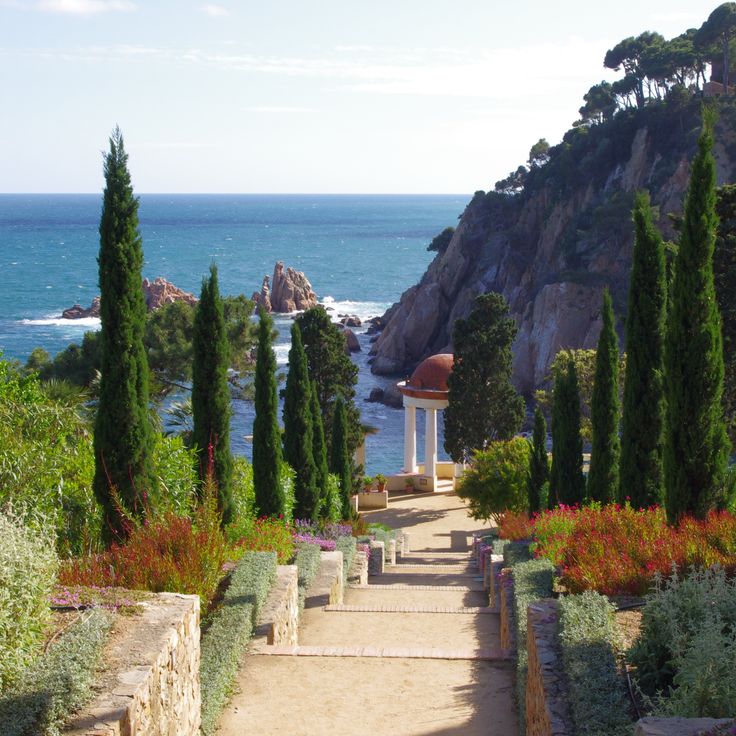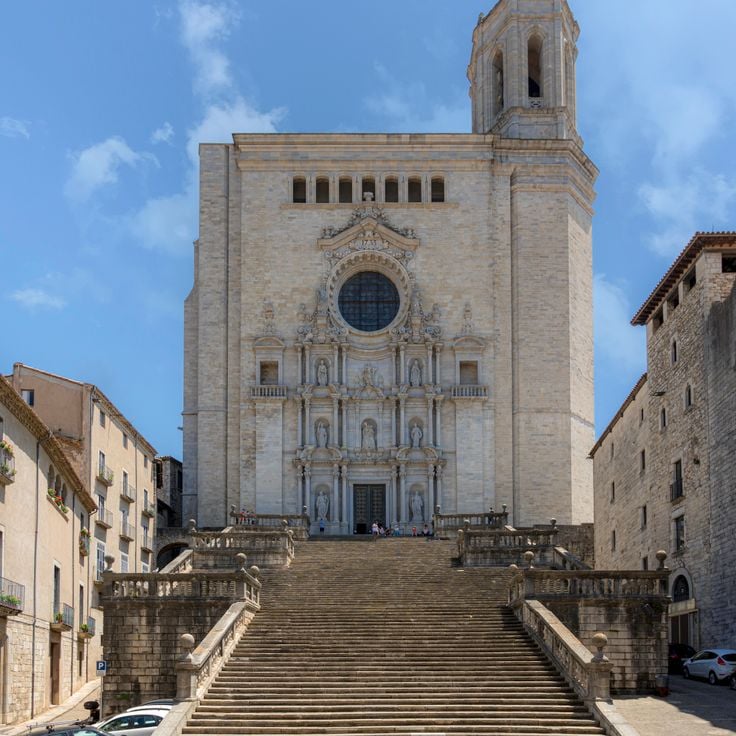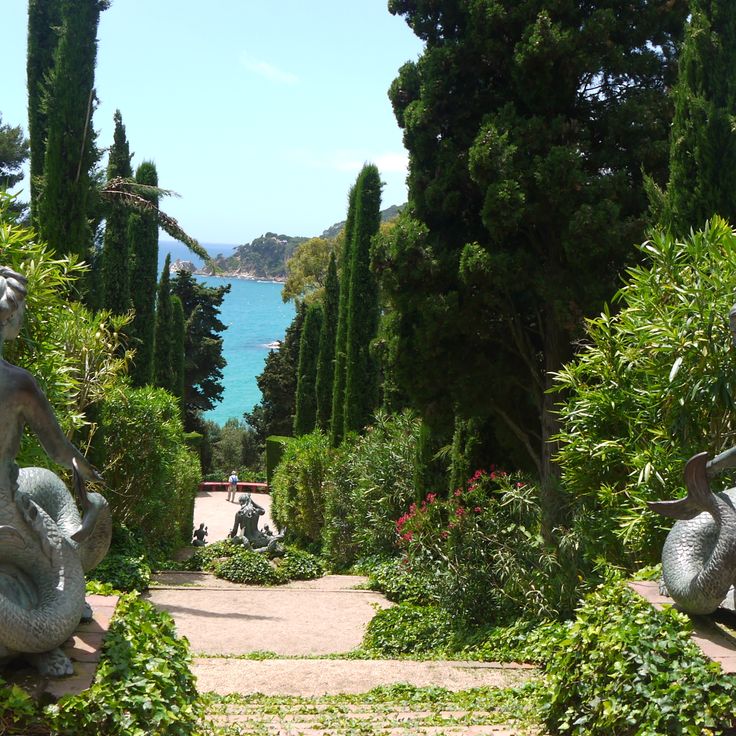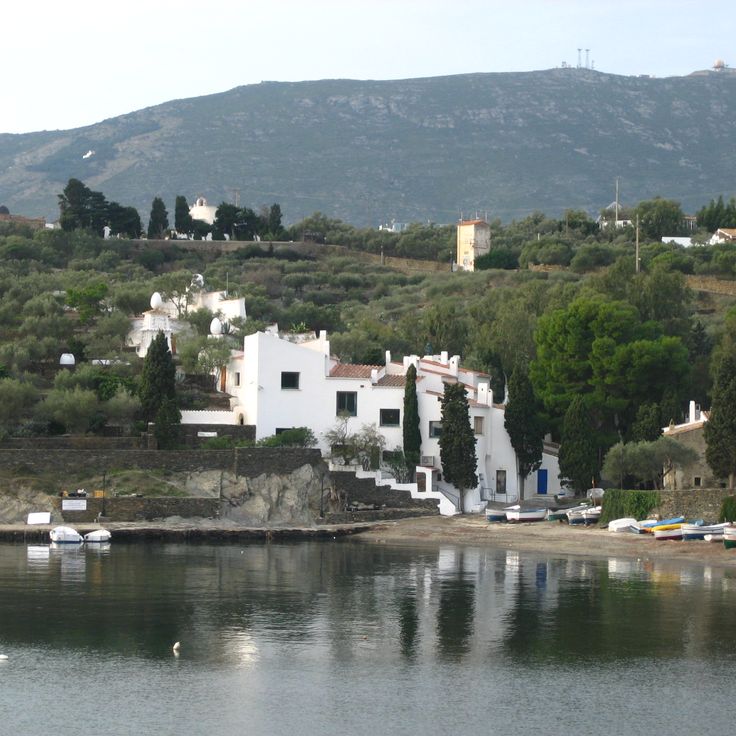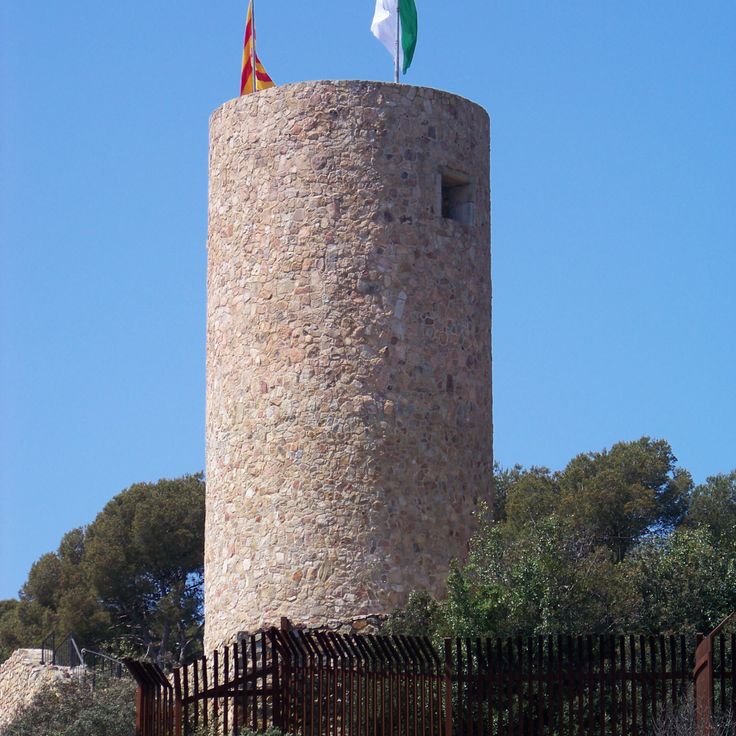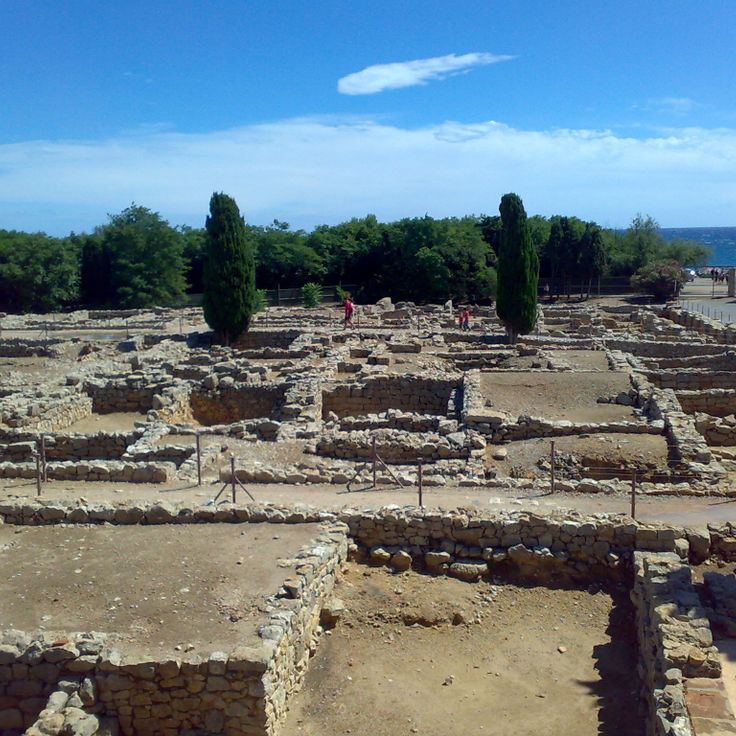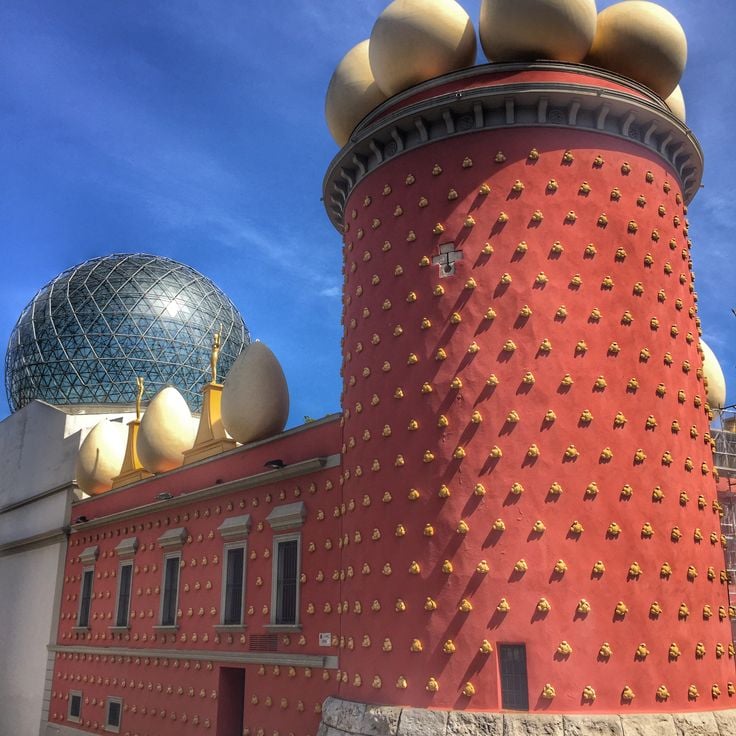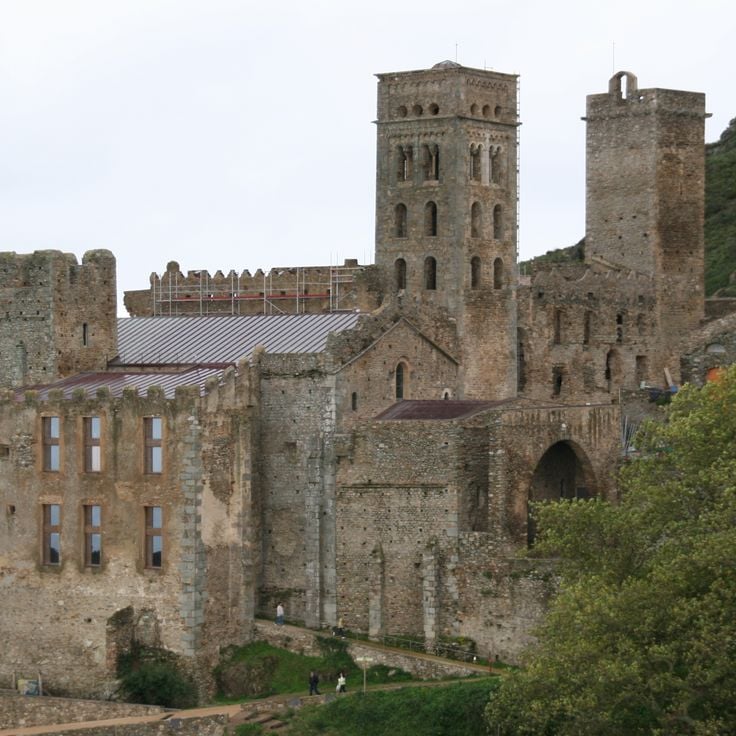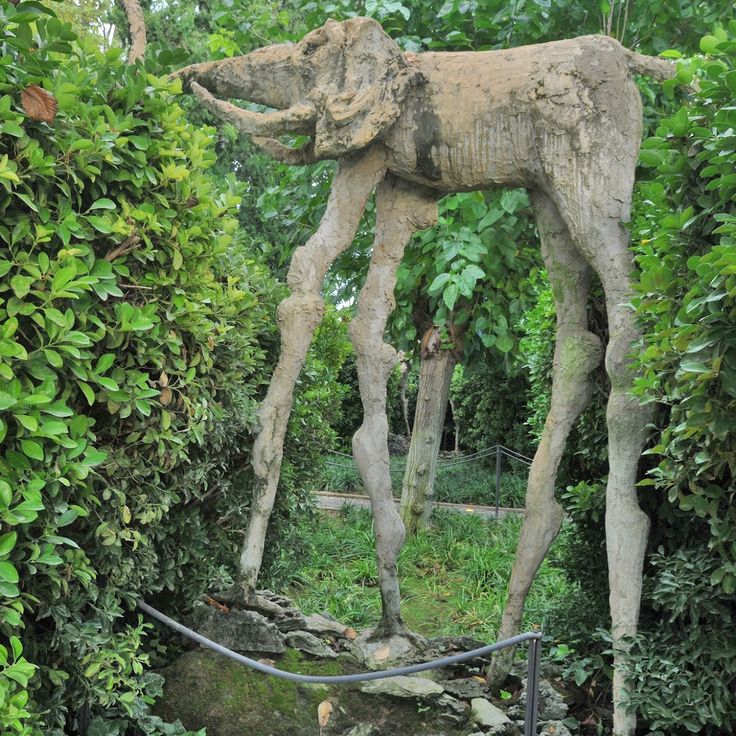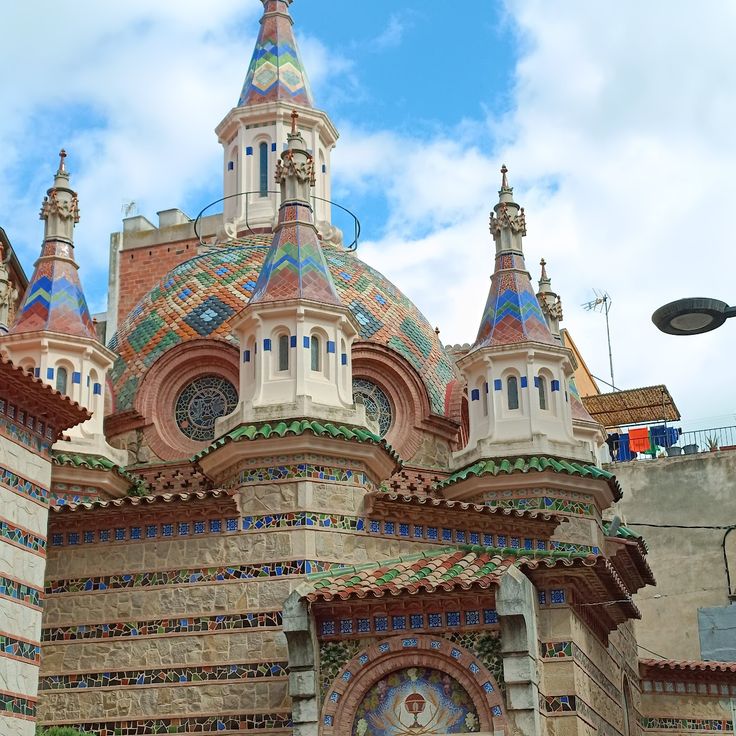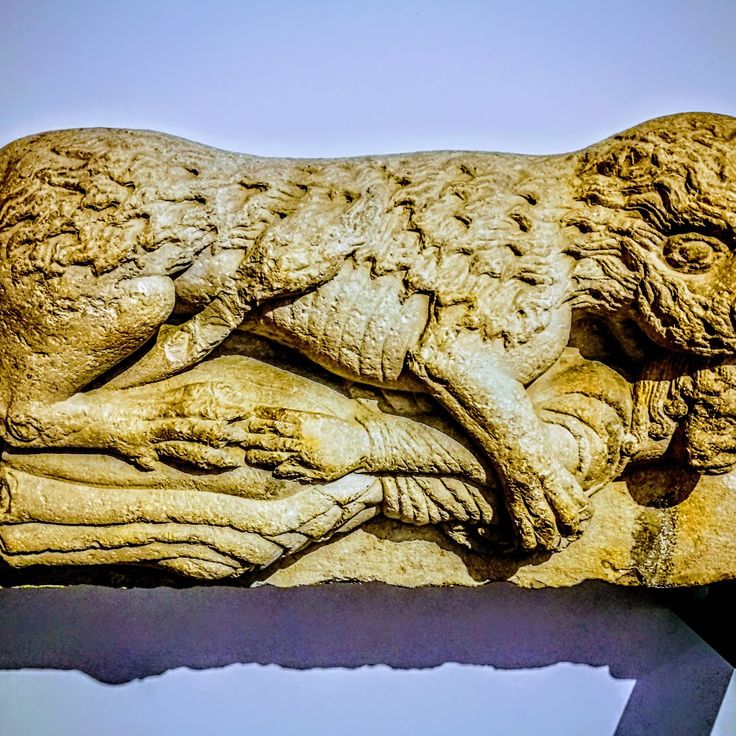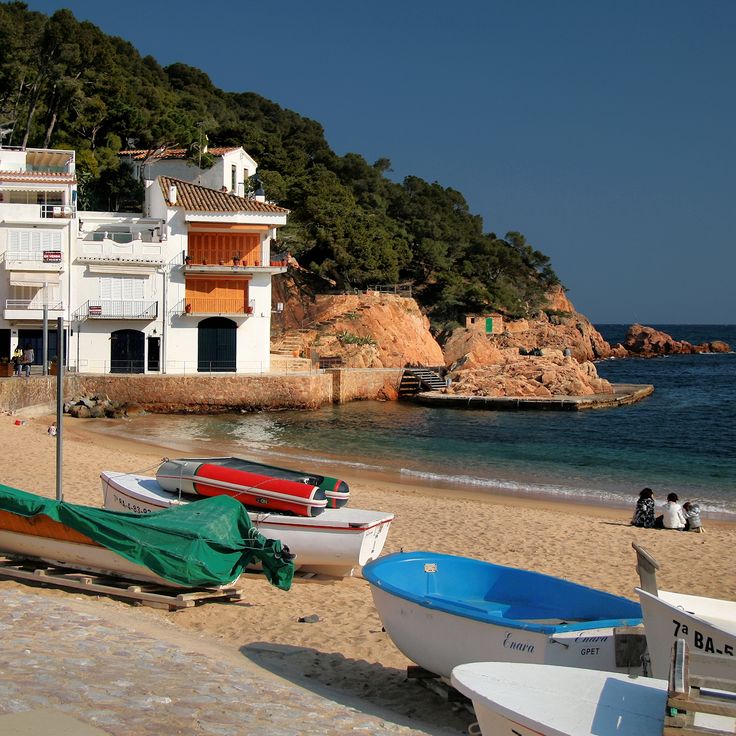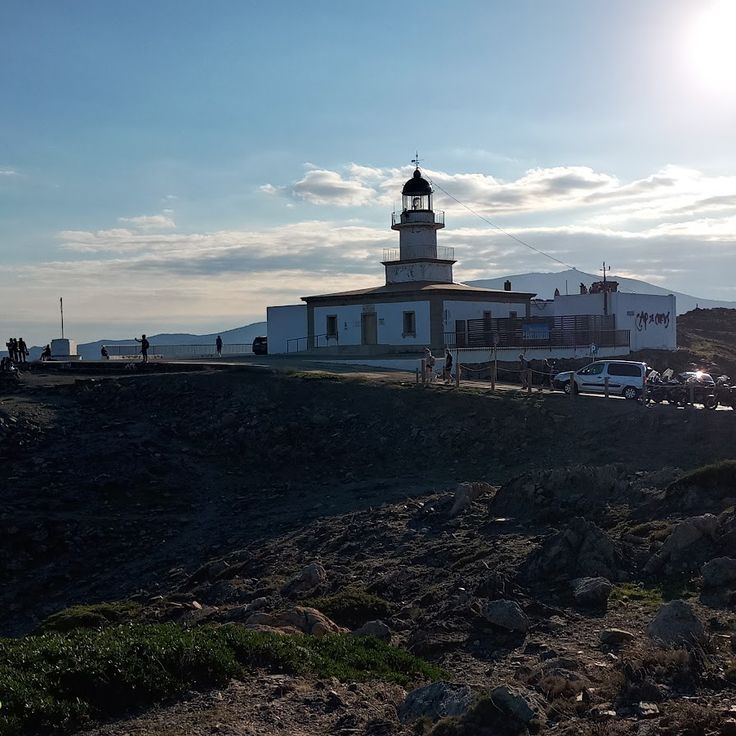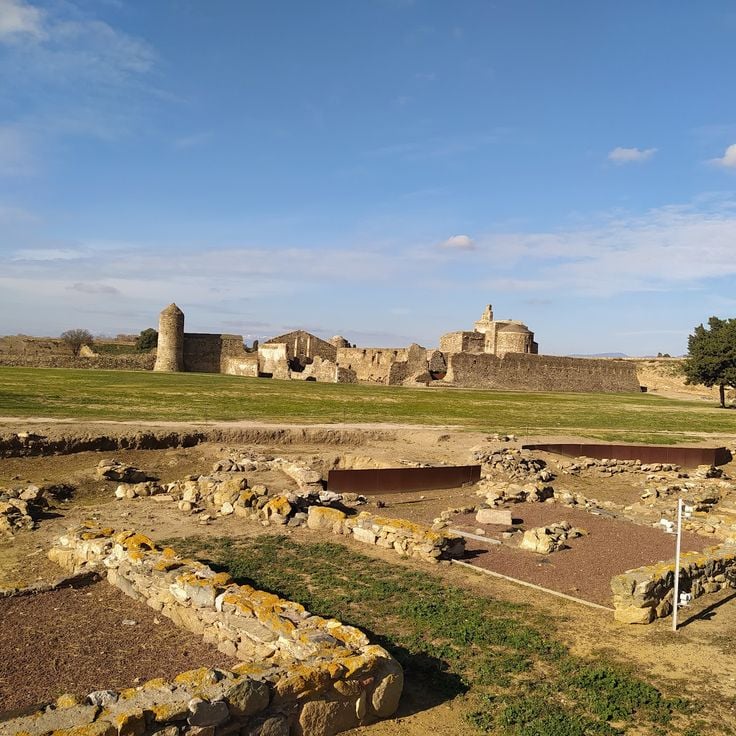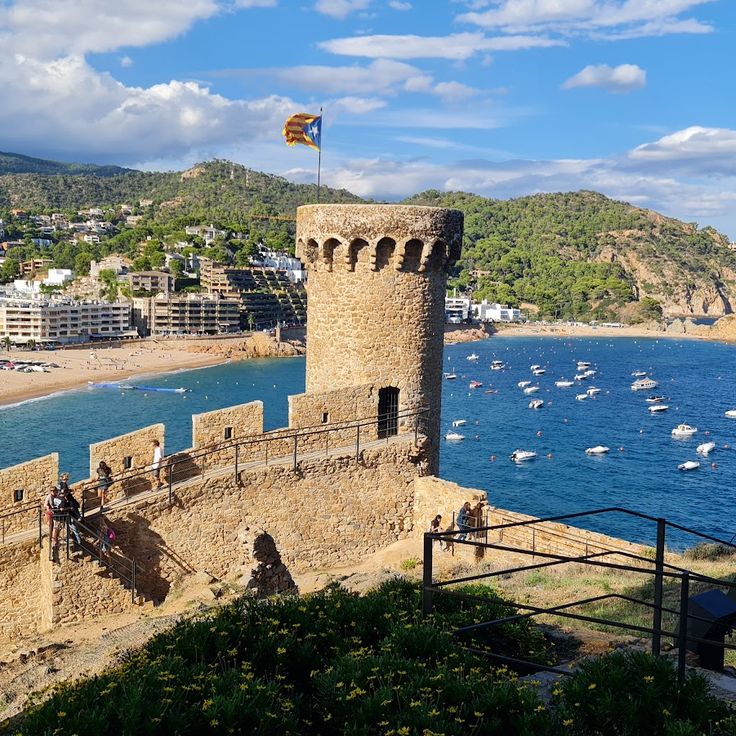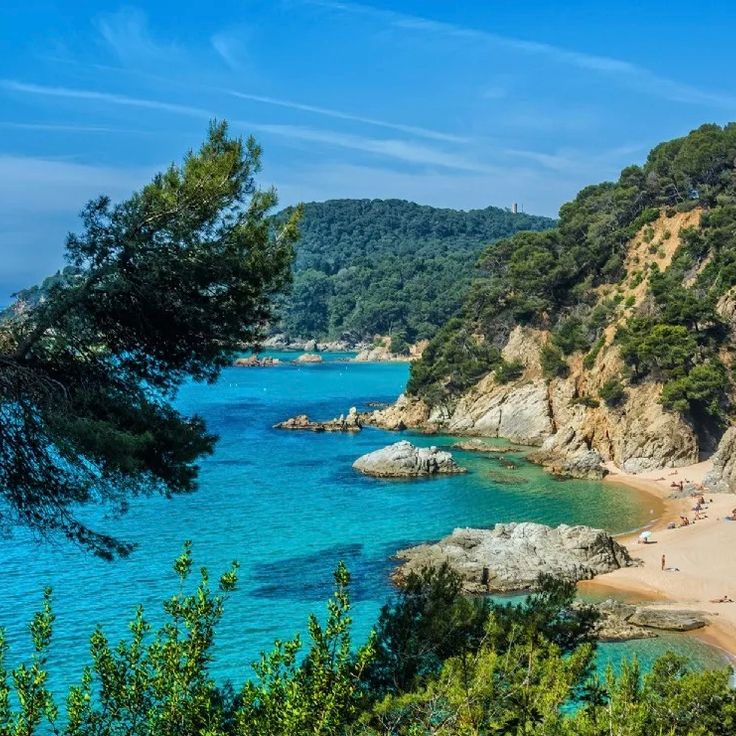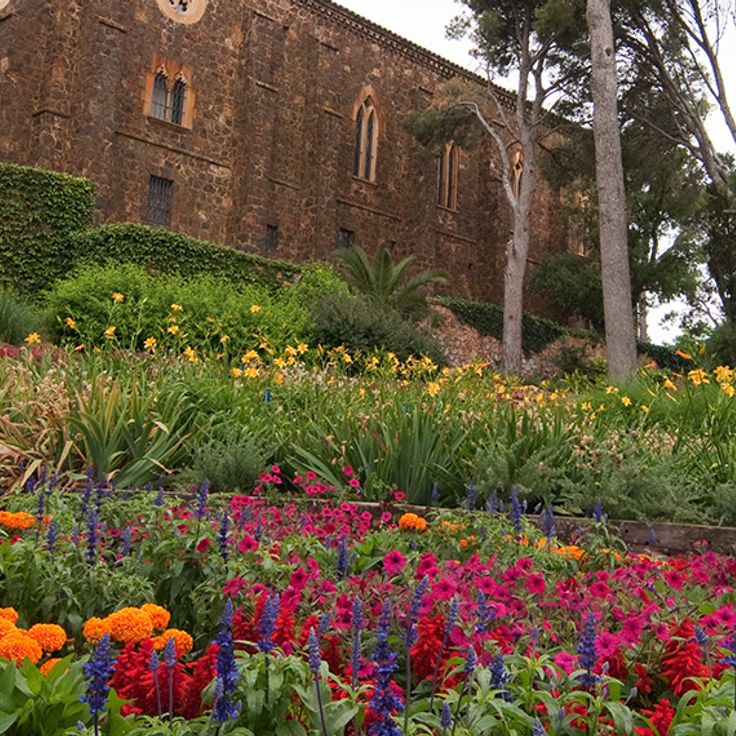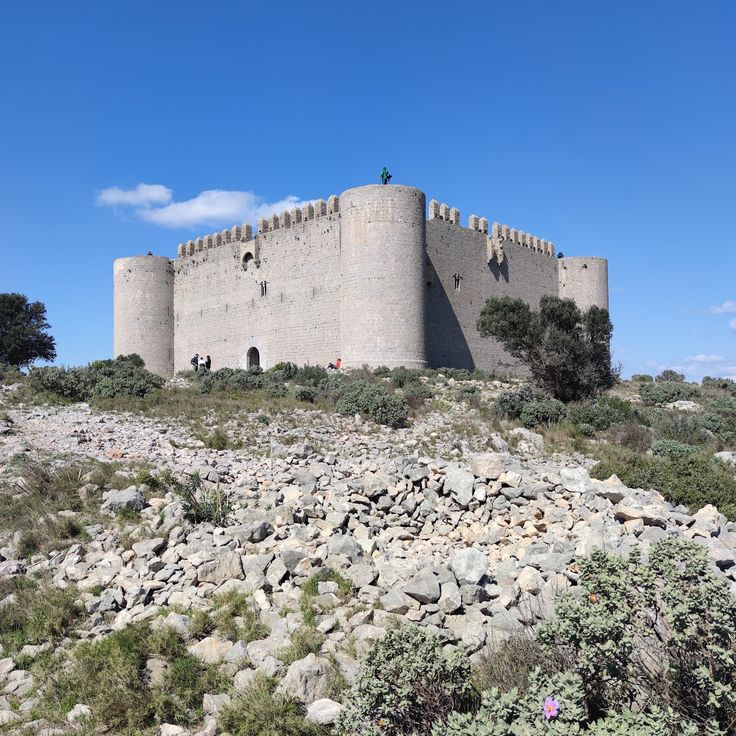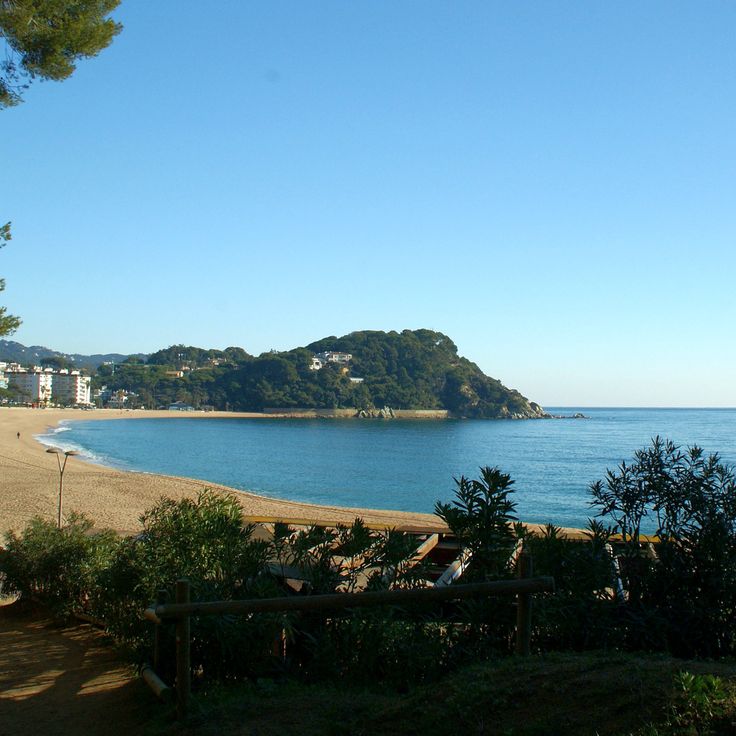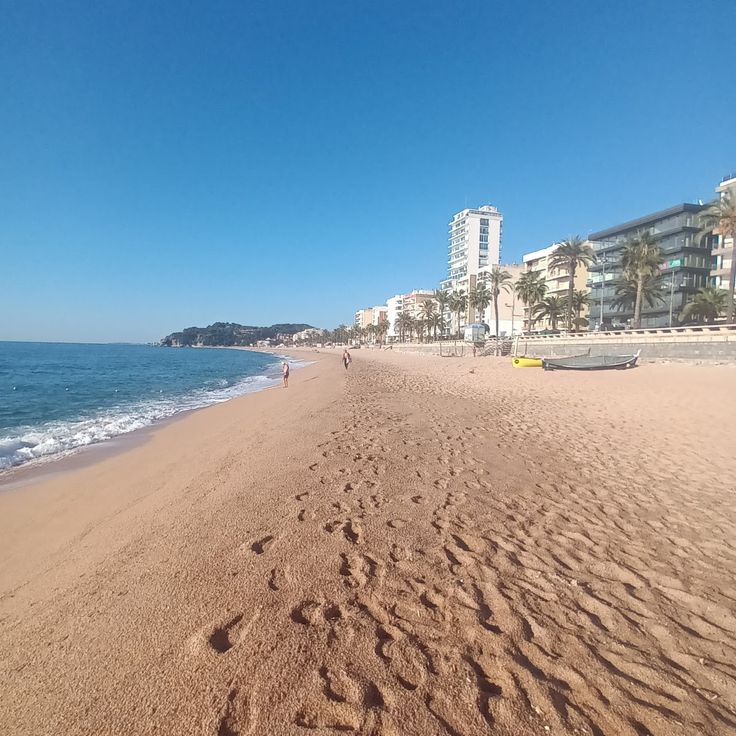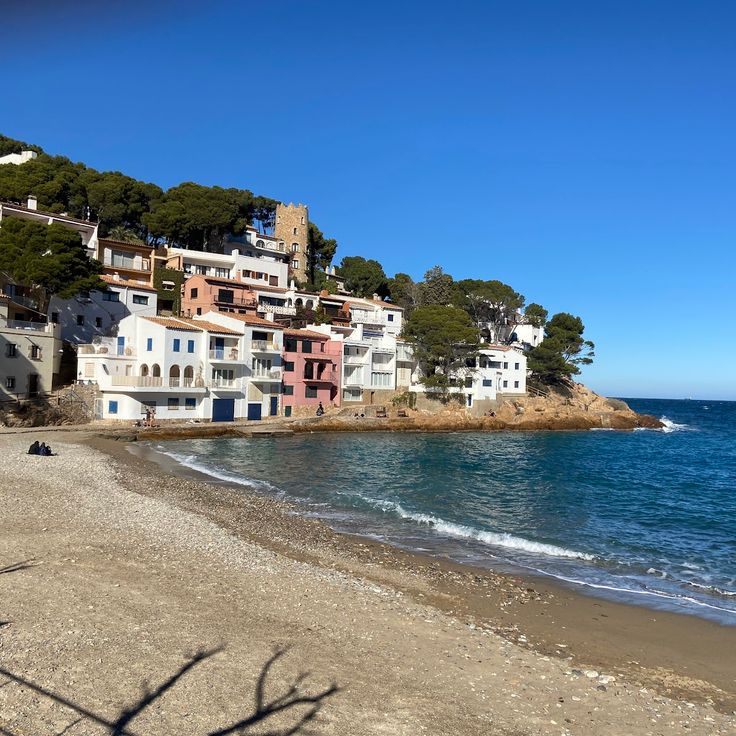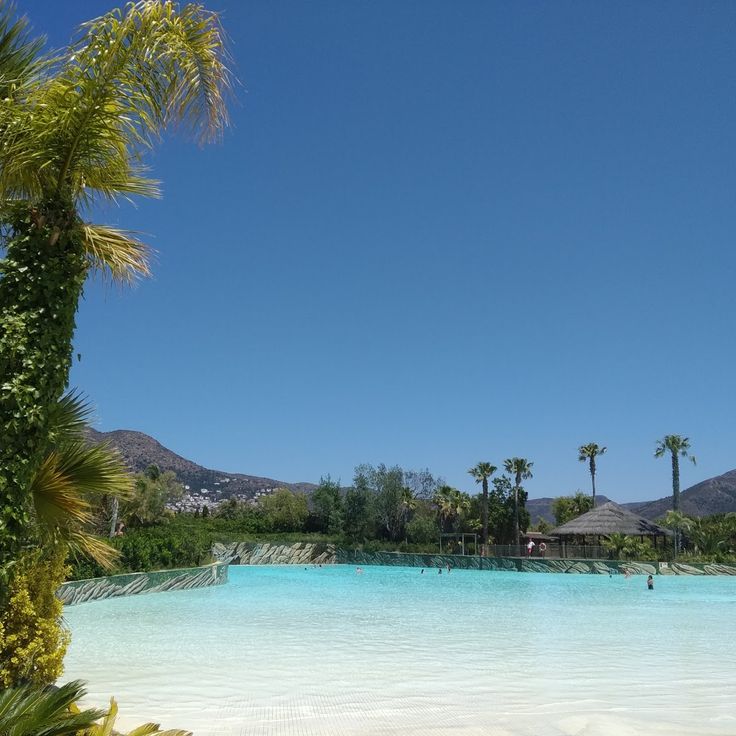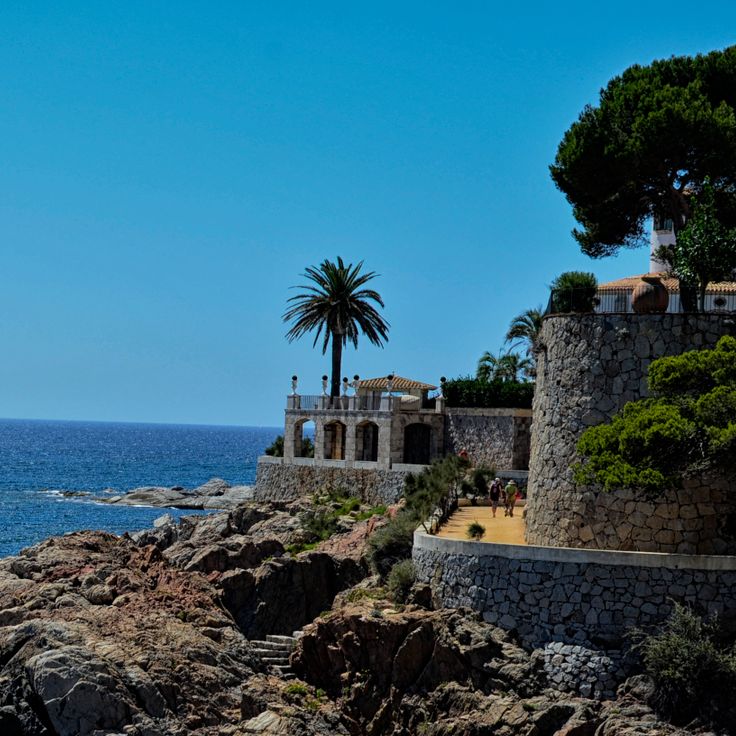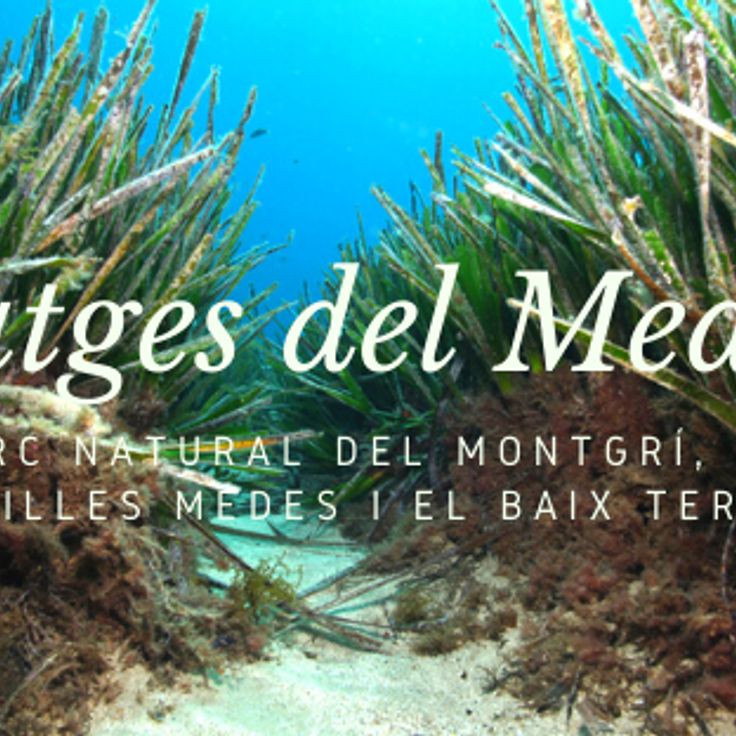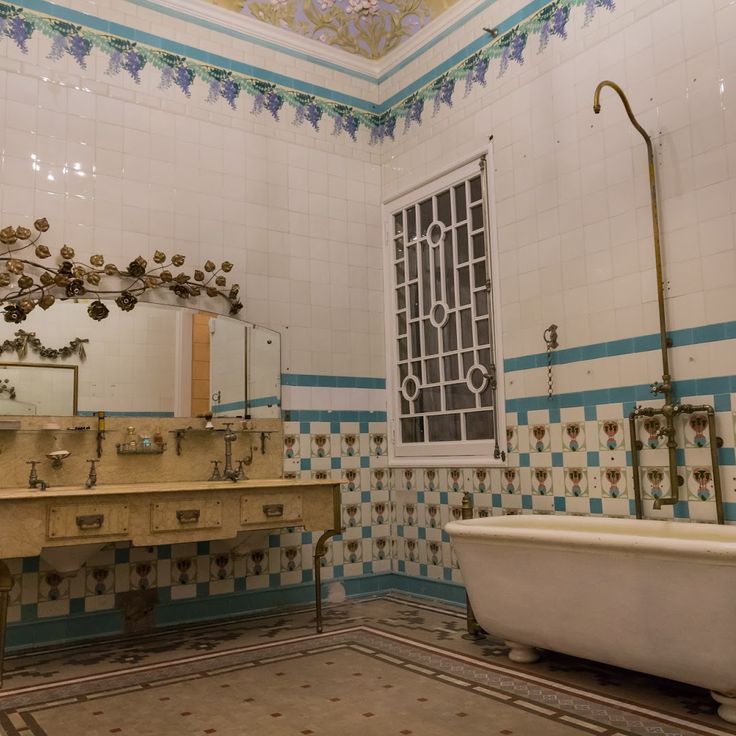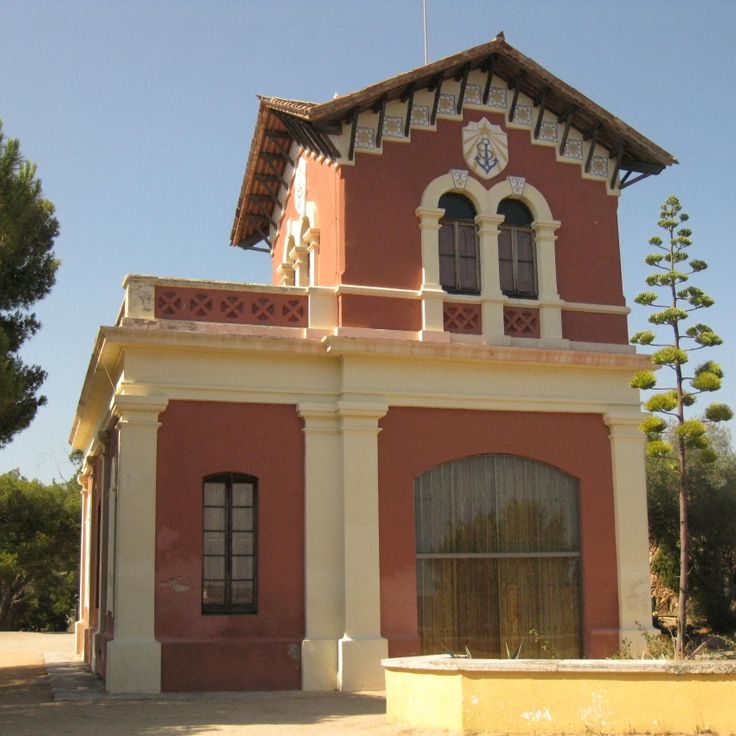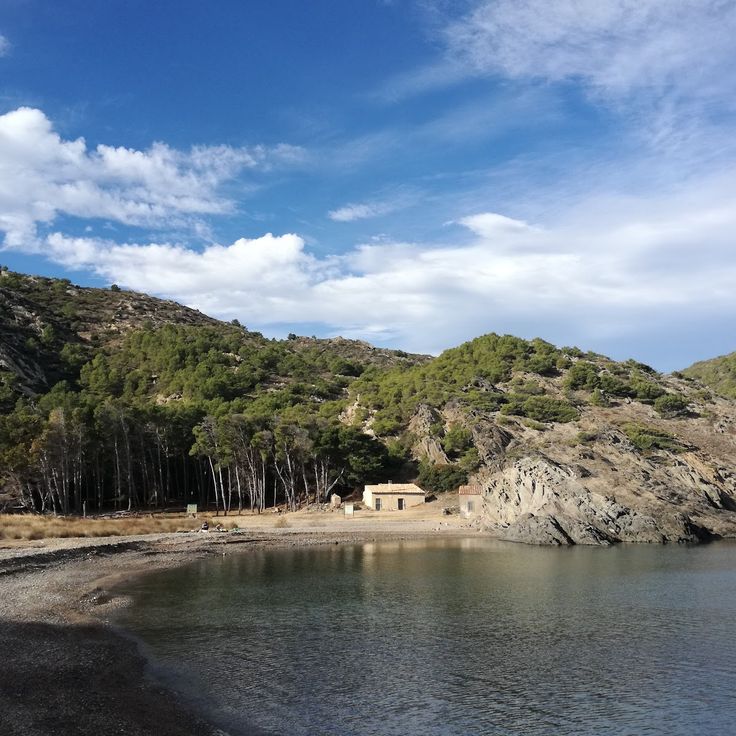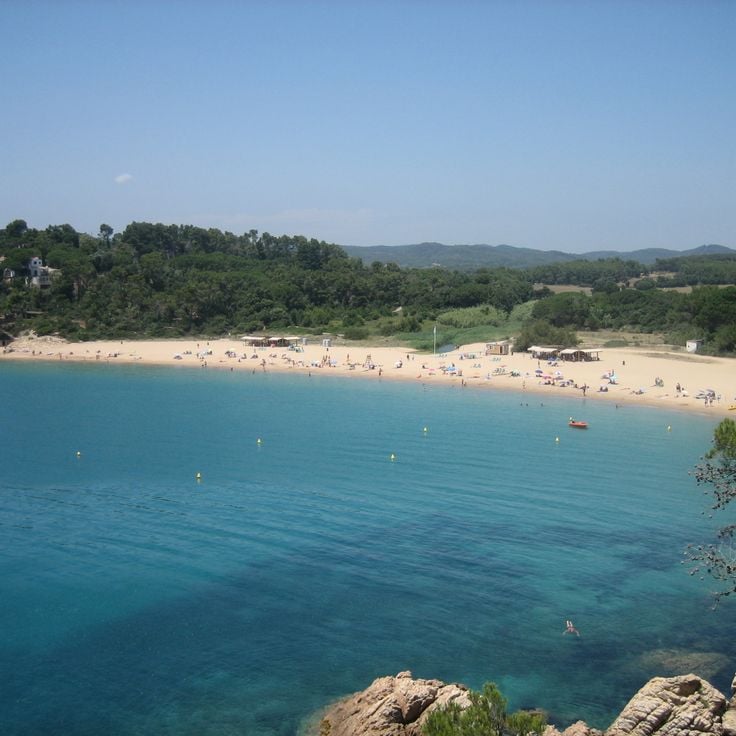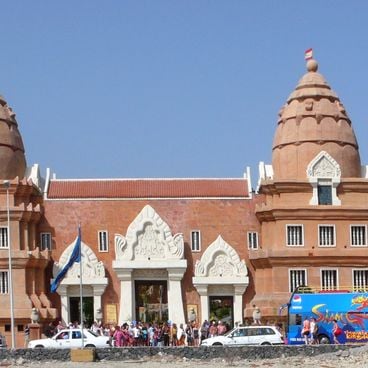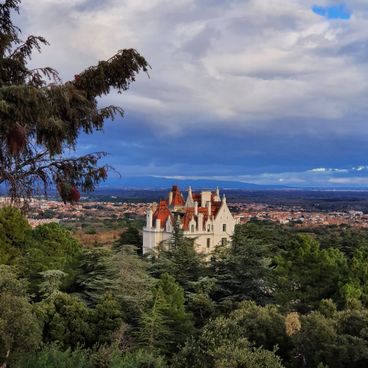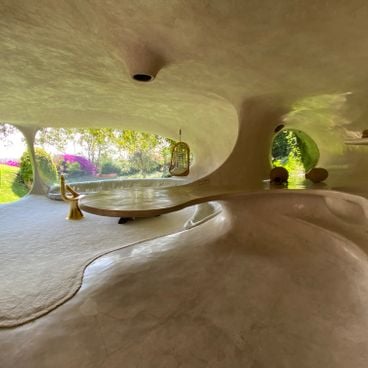The Costa Brava stretches along the Catalan Mediterranean coast, combining historical monuments with natural landscapes. Girona Cathedral features the widest Gothic nave in the world, while the Salvador Dalí Museum in Figueres houses the largest collection of the surrealist artist's works. The 10th-century monastery of Sant Pere de Rodes sits above the coast overlooking the sea. The Greek and Roman ruins of Empúries document over a thousand years of Mediterranean settlement. Medieval villages such as Pals and Peratallada have preserved their fortified structures and cobbled streets. The Marimurtra Botanical Garden in Blanes displays Mediterranean and exotic plant species along the cliffs. The coastline offers beaches of various sizes, from the wide sandy stretches at Platja d'Aro to small coves tucked between rocks. The Medes Islands form a marine reserve for divers and snorkelers. The coastal path Camí de Ronda connects many towns, passing through pine forests and along clifftops.
The Jardins botaniques de Marimurtra were established in 1920 by Carl Faust and spread across terraced grounds overlooking the Mediterranean Sea. The site houses over 4000 plant species from Mediterranean and tropical regions. The gardens are situated on a cliff in Blanes and feature various thematic sections, including collections of succulents, Mediterranean flora, and subtropical plants. Visitors can walk through the pathways between the terraces while experiencing the botanical diversity and views of the Costa Brava coastline.
Girona Cathedral was built between the 14th and 17th centuries, combining Romanesque and Gothic architectural elements. The building features a central nave measuring 23 meters wide, one of the widest vaulted church naves in Europe. The original 12th-century Romanesque cloister remains partially preserved. The facade displays Baroque design features from the 18th century. Inside, the cathedral houses liturgical artworks and religious objects from various periods.
The Jardins de Santa Clotilde were designed in 1919 in the Italian Renaissance style and spread across multiple levels on a hillside above Lloret de Mar bay. Landscape architect Nicolau Maria Rubió i Tudurí created this garden with geometric beds, cypress trees and Mediterranean plants. Stone staircases connect the different terraces, while fountains and water basins are distributed along the pathways. Marble sculptures of classical inspiration mark the main axes of the garden. From the upper terraces, views extend over the Mediterranean Sea and the coastline.
The Dalí House-Museum served as Salvador Dalí's main residence with his wife Gala from 1930 to 1982. The building comprises several interconnected fishermen's cottages that the artist gradually acquired and modified according to his vision. The rooms display Dalí's studio, bedroom, library, and various living spaces with original furniture and personal belongings. The garden features terraces offering views over Port Lligat bay. The interior reflects Dalí's artistic approach, with white walls, Mediterranean elements, and surrealist details throughout. The museum documents the daily life and creative process of the artist at this location.
The Castell de Sant Joan is an 11th-century military fortress built on a hill above Lloret de Mar. The structure sits 40 meters above sea level and served for centuries to protect the coast from pirate raids. The keep provides panoramic views across the Catalan coastline and the town below. The fortress ruins document the strategic importance of this location throughout the medieval period.
The ruins of Empúries stand on the Catalan coast and document the successive occupation by Greeks and Romans. The Greek colony of Emporion was established in the 6th century BC and became an important Mediterranean trading center. In the 1st century BC, the Romans built their own settlement adjacent to the Greek town, complete with forum, temples, and public baths. Visitors can walk through preserved streets, examine Roman houses with floor mosaics, and explore sections of the ancient city walls. The adjacent museum displays archaeological finds including pottery, coins, and sculptures from both periods.
The Théâtre-Musée Dalí occupies the former municipal theatre of Figueres and houses the permanent collection of Salvador Dalí's works. The museum displays paintings from different periods of his career, three-dimensional sculptures and spatial installations that document the artist's surrealist approach. The building itself was redesigned according to Dalí's plans, and with its characteristic facade forms a complete work of art.
The Monastery of Sant Pere de Rodes stands at 520 meters altitude on Mont Verdera above the Bay of Llançà. This Benedictine complex was founded in the 10th century and became an important religious center in Catalonia. The church displays Romanesque architecture with a three-nave layout, massive columns, and rounded arches. The 12th-century cloister connects the monastic buildings. The defensive structure with its bell tower documents the military function of the complex. From the ruins, views extend across Cap de Creus and the Catalan coastline.
This medieval castle was acquired and transformed by Salvador Dalí between 1969 and 1979 for his wife Gala. The artist converted the historic fortress into a personal residence featuring elements of surrealist design. The interior rooms display furniture and decorations from various periods, while the gardens are arranged with fountains, elephant sculptures, and Mediterranean vegetation. After Gala's death in 1982, she was laid to rest in the castle's crypt. The building now serves as a museum documenting the relationship between the painter and his muse.
The Church of Sant Roma was built in the 14th century in Romanesque style and stands in the centre of Lloret de Mar. The building features a single nave with coloured stained glass windows that illuminate the interior. The square bell tower dates from the same period and defines the church's silhouette. The simple facade displays typical characteristics of Catalan religious architecture from this era.
The Girona Art Museum occupies the old Episcopal Palace next to the cathedral and presents a chronological collection of Catalan art from the 10th to the 20th century. The exhibition includes Romanesque and Gothic altarpieces from churches across the region, religious sculptures, Renaissance and Baroque paintings, and works by Modernist and Noucentist artists. The museum features rooms displaying medieval goldwork, liturgical objects, and a significant collection of 19th and 20th-century Catalan painting. The Romanesque frescoes and Gothic retables from small village churches in Girona form a central focus of the permanent collection.
Tamariu Beach occupies a sheltered cove along the Costa Brava, offering fine sand and clear waters. The beach is framed by pine forests that extend close to the shoreline. Several restaurants and cafés line the waterfront promenade, serving Mediterranean cuisine. Visitors can rent sun loungers and umbrellas. The cove provides good conditions for swimming and snorkeling. Tamariu retains the character of a traditional fishing village, with whitewashed houses and narrow streets.
The Cap de Creus Natural Park covers 13,886 hectares at the northeastern tip of the Iberian Peninsula. The landscape features rugged granite formations shaped by centuries of Tramontana winds. Numerous coves provide access to the Mediterranean Sea, while vegetation consists of low shrubs and salt-resistant plants. The area includes both terrestrial and marine protected zones with biodiversity adapted to extreme climatic conditions.
The Monastery of Sant Feliu de Guíxols was established in the 10th century by Benedictine monks and stands in the center of the town today. The Romanesque church features a three-nave vaulted structure and preserves elements from different construction periods. The 14th-century Gothic cloister connects the monastic buildings. The Porta Ferrada, an ornate Romanesque portal, serves as the main entrance to the complex. The Torre del Fum defense tower dates from the 16th century and was built to protect against pirate attacks. Today, the monastery houses the town museum with archaeological finds and historical exhibits documenting the region's development.
The Citadel of Roses covers 131,000 square meters on elevated ground overlooking the Gulf of Roses. This fortified complex combines multiple historical periods, including Greek foundations, Roman ruins, and medieval defensive walls. The preserved bastions and towers date from the 16th century, when the fortress was reinforced against pirate raids. Visitors can walk along the ramparts and explore the archaeological excavations that reveal centuries of settlement history in this coastal location.
The medieval village of Pals preserves its 12th-century historic center with cobbled streets and Romanesque architecture. The church of Sant Pere dominates the town with its 15th-century bell tower. The Torre de les Hores, a Gothic defensive tower, provides panoramic views over the Empordà plain. Stone houses display typical Catalan windows with carved stone frames. The town walls still enclose parts of the old quarter. Several arches connect the narrow passages between buildings.
The Murailles de Vila Vella form a 14th-century fortification system that surrounds the historic center of Tossa de Mar. These walls feature three main towers rising above the defensive structure. Visitors can walk along the ramparts and climb stone staircases to reach various observation points, offering views of the Mediterranean Sea and surrounding area. The site documents medieval military architecture along the Catalan coast.
Cala Sa Boadella is a beach on the Costa Brava situated between forested cliffs. The golden sand stretches approximately 250 meters in length, surrounded by Mediterranean vegetation including pine and oak trees. The clear water remains shallow near the shore, suitable for swimming. Access is via a walking path from the car park, taking around 15 minutes. On site, there is rental service for kayaks, paddleboards and snorkeling equipment. The northern section of the beach is designated as a naturist area. During summer months, a lifeguard is on duty. The cove provides shelter from wind and is popular with divers due to underwater rock formations.
The botanical gardens of Cap Roig spread across multiple terraces along the coastal cliffs and house more than a thousand plant species from the Mediterranean region and other continents. The estate was developed from 1927 by Colonel Nicolai Woevodsky and his wife Dorothy Webster. The collection includes palms, succulents, cacti and numerous Mediterranean woody plants. Contemporary sculptures are placed throughout the plantings. The grounds provide views over the sea and coastline. During summer, the Festival de Cap Roig concerts take place here.
The Château de Montgrí is a Gothic fortress built in 1301, located at an elevation of 315 meters on the Montgrí massif. This military structure features walls reaching 13 meters in height and was constructed under the orders of King James II of Aragon. The construction remained unfinished, which is still evident today from the missing vaults and roofs. From the fortress, visitors can see expansive views over the Medes Islands, the Empordà plain, and the Pyrenees. Access to the castle is via a hiking trail that takes approximately one hour to complete.
Playa de Fenals stretches for 700 meters along the coast of Lloret de Mar, offering fine sand and calmer waters than neighboring beaches. This beach features rental facilities for kayaks, pedal boats, and paddleboards. Several restaurants and bars line the promenade behind the beach. A coastal path through a pine forest connects Playa de Fenals with other coves in the area, providing walks with views of the Mediterranean Sea.
Water World is an aquatic centre in Lloret de Mar featuring multiple outdoor pools, various water slides and play areas for children. The facility includes rest zones with sun loungers and several restaurants and snack bars. The slides range from family-friendly rides to faster descents for visitors seeking more thrills. The centre also offers children's pools with shallow water and age-appropriate attractions.
Lloret Beach stretches for 1.6 kilometers along the coastline of Lloret de Mar, serving as the town's main beach. This wide sandy beach features public showers, changing facilities, and restroom amenities. Visitors can rent sun loungers and umbrellas, while lifeguards patrol the area during the season to ensure safety. The beachfront promenade is lined with numerous restaurants, cafes, and bars offering Mediterranean and international cuisine. The beach provides water sports opportunities including jet skiing, parasailing, and banana boat rides. The promenade offers a walking path that connects the beach to the center of Lloret de Mar.
Plage de Sa Tuna sits in a sheltered cove along the Begur coastline. This pebble beach is lined with traditional fishing houses that give the bay an authentic character. The clear waters are suitable for swimming and snorkeling. Surrounding restaurants serve fresh seafood and local fish dishes. The beach can be reached by road or on foot via coastal paths. The natural setting with rocks and Mediterranean vegetation makes this spot an appealing destination on the Costa Brava.
Aquabrava offers families multiple water pools and themed swimming areas. The park features water slides of varying difficulty levels suitable for both children and adults. Visitors will find relaxation zones with sun loungers around the pools. The facility includes several attractions, including wave pools and lazy rivers. Restaurants and snack bars complement the offerings for a day trip.
The Camí de Ronda stretches for 43 kilometers along the Catalan coast, connecting numerous coves and beaches. This historic coastal path was originally used by border guards and now leads hikers over cliffs, through pine forests, and past rock formations. The route runs between the towns of Portbou in the north and Blanes in the south, providing direct access to secluded swimming coves. The path can be walked in daily stages, with various difficulty levels and lengths available.
The Illes Medes form an archipelago of seven uninhabited islands off the coast of L'Estartit. This protected marine park ranks among the most important diving sites in the western Mediterranean. The waters host over 1,350 documented species, including barracudas, groupers, and various coral formations. Divers explore underwater caves, steep rock walls, and sunken shipwrecks. The nature reserve was established in 1983 to preserve marine biodiversity. Glass-bottom boats allow non-divers to observe the underwater environment as well.
Can Font is a 19th-century bourgeois residence now operating as a museum. The building showcases the lifestyle of the Catalan bourgeoisie through preserved period furniture, decorative items and everyday objects from that era. The rooms are furnished with contemporary pieces and provide insight into the social and cultural reality of the wealthy classes in Lloret de Mar during the region's industrial expansion.
El Salvament Marítim is a maritime rescue station built in 1904 to provide assistance to fishermen in distress. The building is located at the port of Sant Feliu de Guíxols and now houses an exhibition on the maritime history of the region. Visitors can explore the historic rooms and learn about the development of rescue services along the Catalan coast.
This cove is located in the Cap de Creus Natural Park and can be reached via a 45-minute hiking trail. Cala Tavallera features a pebble beach with turquoise waters known for their clarity. The sheltered location and rocky underwater landscape make this spot suitable for snorkeling and diving enthusiasts. The beach has no tourist facilities, preserving its natural character. The surrounding Mediterranean vegetation and rocky cliffs define the landscape of this remote coastal area.
This beach stretches over 300 metres of fine sand and sits within a protected natural area on the Costa Brava. Plage de Castell provides access to several walking trails leading to the archaeological remains of an Iberian village. The site combines beach recreation with cultural interest, allowing visitors to discover the ancient history of the region. The area forms part of a conservation zone that preserves Mediterranean flora and fauna.
